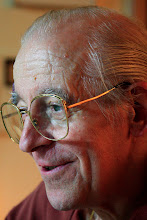춘풍 니불 아래 서리서리 넣었다가
어론님 오신 날 밤이어든 굽이굽이 펴리라
Oh that I might capture the essence of this deep midwinter night
And fold it softly into the waft of a spring-moon quilt,
Then fondly uncoil it the night my beloved returns.”
This sijo (a tightly composed lyric verse of 3 lines) by Hwang Chin-i (黃眞伊, 황진이, c.1520-c.1560) is well-known among Koreans. Hwang was a famous kisaeng (妓生, 기생, female entertainer), known by her professional pseudonym Myongwol (明月, 명월, Bright Moon), who beguiled monks of high virtue and had a love affair with the Confucian philosopher So Kyong-dok (徐敬德, 서경덕, 1489-1546) contributing to the literary world of the Choson Dynasty (大朝鮮國, 대조선국, 1392-1910).
Xue Tao (薛涛, 768-831) was a renowned female poet and entertainer in Tang Dynasty (唐朝, 618-907) China regarded to be as talented as Hwang. Her name may not be familiar to Koreans but it would be surprising to know that the original lyrics of the popular Korean song Tongsimcho (동심초) were written by her.
“Flower petals fall as wind blows
and we don’t know when we will meet again.”
The song is especially well known among Koreans in their 40s.
The Korean poet Kim Ok (金憶, 김억), the teacher of the romantic poet Kim So-wol (金素月, 김소월, 1902-1934), translated Xue Tao’s poem into Korean. The translation did not render the entire poem but only part of the original. The lyrics and the nostalgic melody soothed the people’s troubled hearts in the immediate period after liberation from Japanese occupation.
I just try to tie blades of grass.”
The lyrics, in the original, describe how one longs to be with someone she loves. Tao thought about marrying Yuan Zhen (元稹, 779-831) a Tang Dynasty poet. She fell in love with the poet, 10 years her junior, but their relationship did not last long. It is not certain whether Tao wrote the poem because she missed Zhen, but there is a possibility. Documents also show that other famous poets such as Bai Juyi (白居易, 772–846) and Liu Yuxi (劉禹錫, 772–842) and many government officials who visited Sichuan (四川) where Tao lived socialised and exchanged poems with her. She was also famous for producing her own paper, tinted with a hint of red, to write on.

The portrait of the Korean painter and calligrapher, Sin Saimdang (申師任堂, 신사임당, 1504–1551) on the new 50 000 won banknote is controversial these days. No one can be sure about what the mother of the Korean philosopher Yi I (李珥, 이이, 1536-1584), who became one of the great philosophers during the Choson Dynasty, looked like. There is no record of her appearance. As the portrait on the bill is different from the official portrait designated by the state, some claim the woman on the bill looks like a kisaeng.
 Sin Saimdang
Sin Saimdang
Chin-i and Tao must feel it is unfair. A painting must be evaluated as a painting. It is unwise to judge a person by one’s social standing or career. It was some 2200 years ago that the leader of the first rebellion against the Chinese Qin Dynasty (秦朝, 221-206 BC) Chen Sheng (陳勝, ??-209 or 208 BC) declared, “There is nothing like a specific heritage to become a nobleman.”
Giorgio Olivotto
Seoul, Korea
May 30, 2010

Nessun commento:
Posta un commento